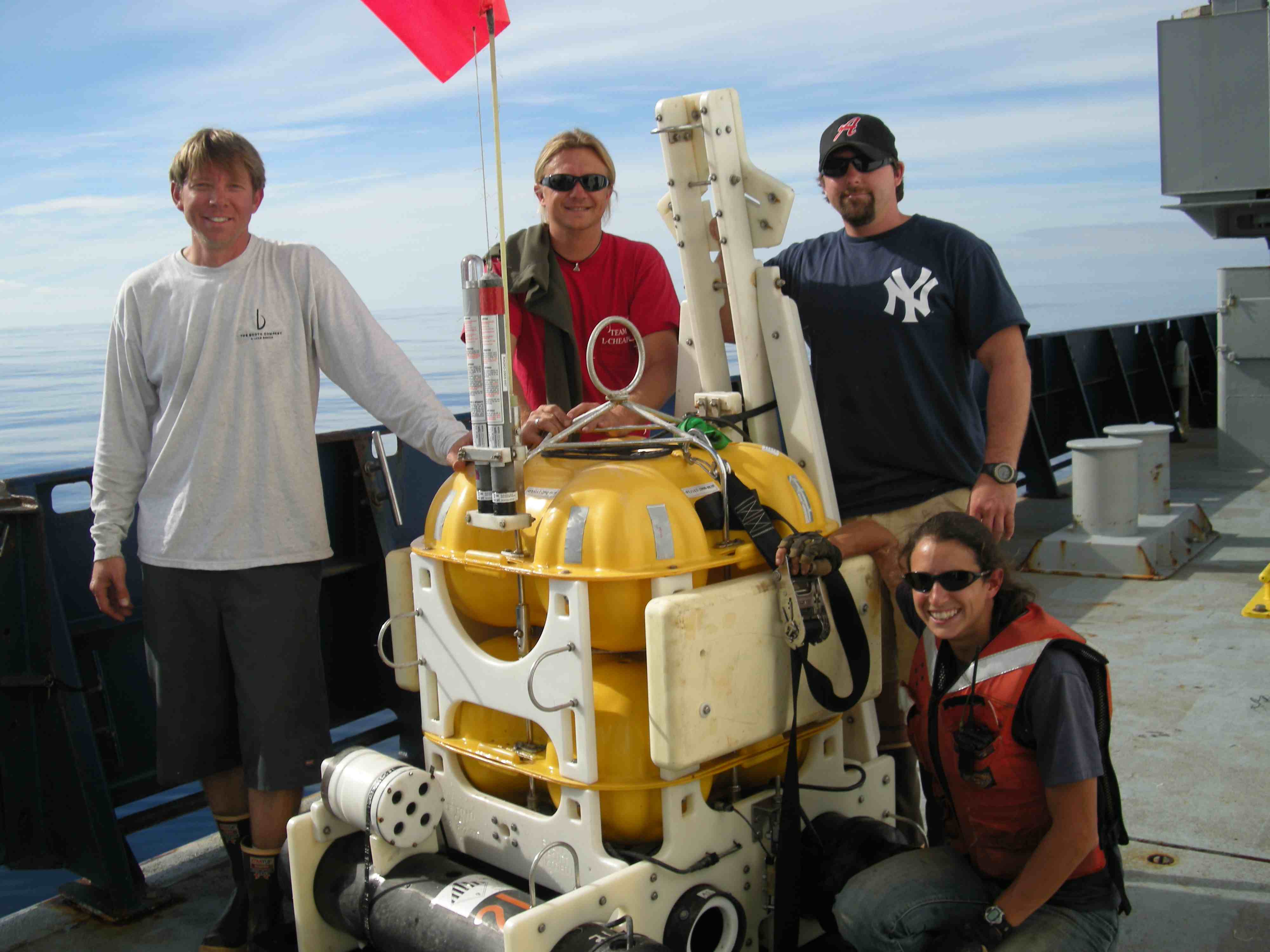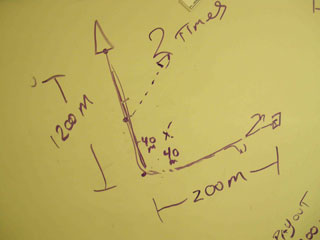Our euphoria from the resue of OBS9 was short-lived. The next day was fine, with 3 OBS’s recovered with no problems, and awesome views of the Southern Alps. The following day, however, was trouble. We had the same problem with OBS10 as we did with the formerly stuck OBS9. We could communicate with it, but it did not drop its weight and surface.
Two dredge attempts were made, without success. Each attempt took 6 hours and involved laying out a cable (called a wire) all the way to the seafloor (1200 meters), making a loop in the wire that we hoped was centered on the OBS, and then pulling the wire back up, monitoring its tension carefully for any nibbles from the OBS. It was a very long and intense day.
Peter Molnar was concerned that the dredge design did not properly take into account the natural curve (catenary) of the dredge wire, and did numerous calculations (mostly out loud) to better approximate the cable layout. We all agreed that having the ship farther away before pulling up the wire was a good idea. Meghan contacted some of her colleagues for their ideas, which had the advantage of being proven in practice. The new design settled on was to lay out cable in an L-shape, with the estimated OBS position on the inside corner of the L. Then the ship would move some distance away from the L, and pull it up at an angle.
I couldn’t stand to sit in the lab during the dredge this time – spending a whole day watching cable tension and speculating about what might be happening at the seafloor was getting old. Every now and then I would swing back by the lab to take a quick look at the numbers. John and Meghan monitored nonstop. I stopped by after lunch and could see that at that time the cable was being pulled back up. Looking at the OBS position I could see that the OBS had moved 10 meters or so from the position it had been at all day. A look again, it had moved again!
Ernie and John had sent a burn command to the OBS as a last resort as the cable was being pulled up, and it looked like it worked! Cheers and high fives ensued as the OBS made its way up the water column. The dredge cable must have jarred the OBS loose from the mud it was stuck in at the seafloor, and the electrolysis burn release was no longer impeded by the mud. At least that is the guess. The OBS ascended in the normal way, free of the cable. Lucky again.

The Scripps ocean bottom seismometer (OBS) team after successful rescue of OBS10. From left, Ernie, Martin, Mark, and Meghan




